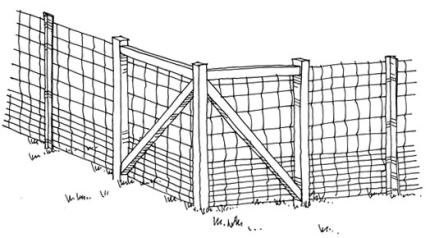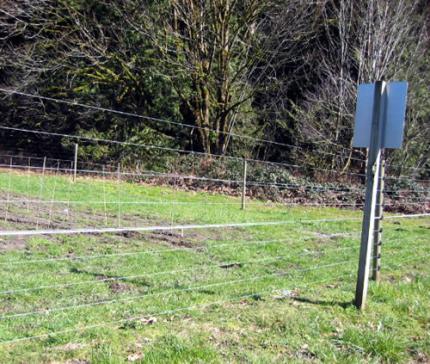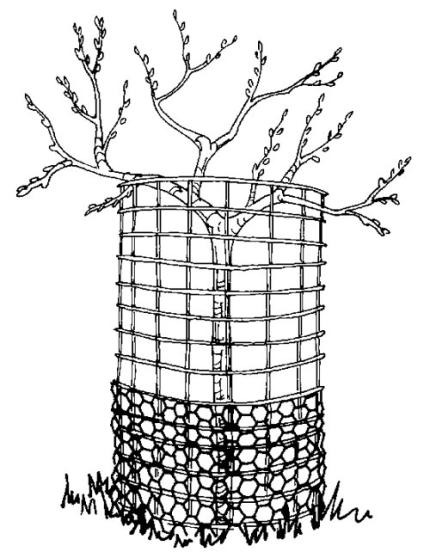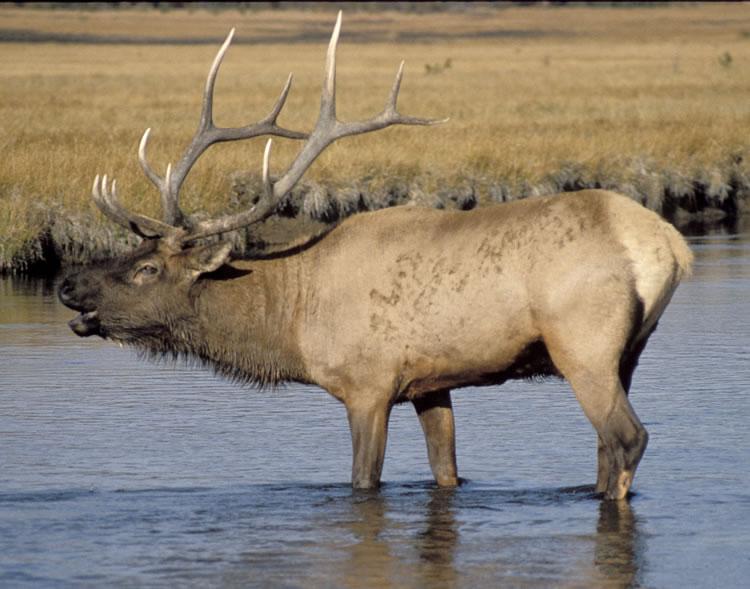Elk are members of the deer family and share many physical traits with deer, moose, and caribou. They are much larger than deer, but not as large as a moose.
Description and Range
Physical description
Elk range in color from light brown in winter to reddish tan in summer, and have characteristic buff-colored rumps. In winter, a dark brown, shaggy mane hangs from the neck to the chest. Bull elk have large, spreading antlers. Like other members of the deer family, the antlers of bull elk grow during spring and summer beneath a hairy skin covering known as velvet. In late summer the velvet dries and falls off to reveal the bonelike structure of the fully-grown antlers. Elk shed their antlers beginning in late February for the largest males, extending to late April and even early May for younger ones. New antler growth begins soon after shedding.
Adult elk weigh 600 to 800 pounds, and adult cows typically weigh 400 to 500 pounds. With thick bodies, short tails, and long legs, adult elk stand 4.5 to 5 feet high at the shoulder.
Geographic range
Elk are found throughout Washington, with two subspecies primarily occupying opposite sides of the Cascade Crest. Roosevelt elk (Cervus canadensis roosevelti) are found in the coastal ranges of the Olympic Peninsula, southwest Washington, and the western slopes of the Cascade Range including Western Washington river valleys. Olympic National Park and surrounding forests host the largest number of Roosevelt elk living anywhere -- about 5,000.
Rocky Mountain elk (Cervus canadensis nelsoni) are found primarily in the mountain ranges and shrubsteppe of eastern Washington, with small herds being established or reestablished throughout the Pacific Northwest. They now overlap with Roosevelt elk in the southern Cascade Mountains and adjacent areas. Many Rocky Mountain elk populations currently in Washington stem from elk transplanted from Yellowstone National Park in the early 1900's.
Rocky Mountain elk are slightly lighter in color than Roosevelt elk, and their average size is slightly smaller. The antlers of Rocky Mountain elk are typically more slender, have longer tines, and are less palmated than Roosevelt elk antlers.
Living with wildlife
Food and Feeding Behavior
- Elk require large amounts of food because of their body size and herding tendencies.
- In spring and summer, when food is plentiful, elk are mainly grazers—eating grasses, sedges, and a variety of flowering plants.
- In fall, elk increasingly become browsers, feeding on sprouts and branches of shrubs and trees, including conifers as a last resort when snow covers other plants.
- During fall and winter, elk continue to eat grasses when these are available and not covered by deep snow.
- Like deer and moose, elk are ruminants. They initially chew their food just enough to swallow it. This food is stored in a stomach called the “rumen.” From there, the food is regurgitated, then re-chewed before being swallowed again, entering a second stomach where digestion begins. Then it passes into third and fourth stomachs before finally entering the intestine.
Cover and Range Needs
- Elk are hardy animals that have few physiological needs for cover. They do, however, use cover during extreme weather, to avoid hunters, or when they are harassed. Cover also conceals newborn calves from predators.
- Ideal elk habitat includes productive grasslands, meadows, or clearcuts, interspersed with closed-canopy forests.
- Year-round ranges for Rocky Mountain elk vary from 2,500 to 10,000 acres, and usually include distinct summering and wintering areas.
- Year-round ranges for Roosevelt elk are smaller, usually 1,500 to 4,000 acres, because they are generally found where the climate is less severe and where food and cover are more readily available.
Social Structure
- Elk are social animals, living in herds for much of the year. During spring, summer, and winter, elk tend to split into cow–calf herds and bull herds.
- Cow–calf herds are usually led by older, experienced cows and may include adolescent bulls.
- During the mating season (rut) in early fall, adult and subadult bulls find and temporarily join cow herds. The larger, more aggressive bulls try to gather harems of cows, which they defend against competing bulls (Fig. 2).
- Harems range in size from 3 to 4 cows to as many as 20 to 25 cows. Bulls socially dominate the cows within their harems, but the movements of these breeding groups are still determined by older, lead cows.
- Adolescent males form small bachelor groups or patrol the edge of breeding harems.
- Breeding activities cease by mid-October; bulls usually leave the cow–calf groups then and the herds disperse into wintering areas.
Reproduction
- Mating occurs during the fall rut, and successful bulls breed with numerous females each year.
- Once the rut begins, mature bulls challenge each other vocally, emitting high-pitched calliope-like whistles, or “bugles.”
- Cows have an eight- to nine month pregnancy, which results in the birth of a single spotted calf in late May or early June.
- The timing of birth seems to optimize calf survival by being late enough that the risk of cold, inclement weather has passed, but early enough so that there is considerable time for calves to grow before the onset of next winter.
- Just before giving birth, a cow elk will leave the herd and select a birthing place. Because predators would easily detect large groups of elk, cow elk appear to avoid grouping with other elk until their calves are large enough (usually about two weeks of age) to run effectively to escape predators.
- Other cows sometimes tend calves when mothers are feeding; a mother may nurse her calf for up to nine months.
- Calves grow quickly and lose their spots by summer’s end. By the onset of winter, a calf that entered the world weighing 35 pounds may tip the scales at 225 to 250 pounds.
Mortality and Longevity
- Most elk are physically declining by age 16, and a 20-year-old wild cow elk is very old. Bulls generally do not live as long as cows, rarely surpassing 12 years.
- Hunting, automobiles, predation, and habitat loss all take their toll on elk populations.
- With a superb sense of smell, excellent hearing, and a top running speed of 35 mph, elk are well equipped to avoid the few predators capable of bringing them down.
- Cougars prey upon adult elk; calves may also fall victim to bears, bobcats, domestic dogs, and coyotes.
The Washington Predator-Prey Project was conducted to help determine the impact of predators like wolves and cougars on elk populations, as well as both white-tailed deer and mule deer.
Viewing Elk
Elk are primarily crepuscular (active mostly at dawn and dusk), so early morning and late evening are the best times to observe them. But when temperatures soar or when they are harassed, elk may become more active at night.
When disturbance levels are low and temperatures mild, elk may be observed feeding in short bouts throughout the day. When not hunted, elk adapt well to humans and find lawns and golf courses excellent places to graze. A good time of year to observe elk is in fall. In late September and October, bulls are battling each other over females and are not as concerned about being seen. This is a fascinating time to observe elk because the shrill bugles of the bulls can often be heard near dawn and dusk.
Leafless trees allow greater visibility, and when it is raining there is less chance of being heard crunching through an area. However, be aware of open hunting seasons during this time of year and wear bright orange clothing for your safety. Also, care needs to be taken when around adult male elk during the mating season, particularly in areas where they are accustomed to people, such as national parks.
The best way to view wild elk is to find a meadow, clearcut, or other open grassland elk have been using and to wait quietly nearby. Because elk have a keen sense of smell, it is best to be downwind of where you expect them to come from. (Contact your local Fish and Wildlife office for information on where to view elk in your area.)
Feeding Areas
In winter, look for pits dug in snow where elk have been pawing for food, or for the well-worn trails or crisscrossing tracks in the snow typical of foraging elk. Gnawed aspen and other deciduous tree trunks are also common in elk country during winter. The bottom-teeth-only scrape marks of elk and moose are virtually identical. Gnawings may also be found on downed trees and branches and are easily distinguished from the chisel-like cuttings of beaver.
Aspen trunks that have been gnawed year after year eventually develop a rough, blackened trunk as far up as the animal can reach. A grove of black-trunked aspen is a sign that winter range has been heavily used by elk or moose.
Tracks and Trails
Elk, much easier to track than most animals due to their weight, leave marks in or on almost anything they walk over. Tracks, often found in large numbers indicating a passing herd, are easy to identify and follow (Fig. 3).
Like all members of the deer family, elk have cloven hooves that normally resemble a split-heart shape on soft earth. The dewclaws on all four feet may register in several inches of mud or snow. Hoof prints may be splayed wide on slippery surfaces, or when the animals were running.
Elk trails are often several animals wide and quite noticeable at the transition from grassland into brush or woodlands.
Droppings
Given a steady, consistent diet, pellets deposited by deer and elk may be the same general shape and texture. Individual pellets are usually dimpled at one end and have a small projection at the other, giving them an almost acorn-like shape. However, elk droppings are slightly larger, and whereas an adult deer may leave 20 to 30 pellets at a time, elk may deposit twice that many. This difference in volume becomes especially apparent when a rich diet causes the animals’ droppings to become a soft mass, similar to a domestic cowpie, but smaller.
“Elkpies” average 4 to 6 inches in diameter, while those of deer run about 2 inches across. Even when elk are eating mostly grass, elkpies will still show more distinct edges among the individual pellets than cowpies, which may be an amorphous mass.
Elk Rubs
In late summer, as antler growth ceases, it finishes mineralizing and the blood supply to the velvet begins to deteriorate. This causes the velvet covering of the antlers to dry up and shred. As it dies, bulls begin to vigorously rub their antlers on shrubs and trees, to help rid them of the velvet. This rubbing behavior may also be the first ritualized use of the bull’s newly hardened antlers—it is quite noisy and attracts the attention of other elk.
It has been theorized that this “horning” of shrubs frequently causes shrub branches to be broken off and intertwined with the bull’s antlers, effectively making them look larger and more threatening to rivals and more impressive to potential mates. The rubbing also covers the bone-white antler with plant compounds that subsequently oxidize and stain the antlers to their characteristic dark brown color.
Regardless of the cause of this behavior, the result is obvious: small saplings and shrubs are left looking like someone with a hedge trimmer went on an angry rampage. In areas where elk are abundant, mangled shrubs and small trees are extremely obvious signs of the presence of bulls and their preparation for breeding.
Wallow Sites
Probably the most easily identified elk sign is the mud wallow scented with urine and droppings. Bull elk roll in wallows to cover their bodies with scent, creating bathtub-size depressions with low walls of displaced mud ringing their perimeters. Receptive cow elk, drawn by the odor, will also roll and urinate in the wallow, indicating their willingness to mate. Elk that use these wallows may become so foul smelling that, when downwind, humans can easily detect their presence.
Elk also roll in mud wallows to loosen their dead winter coats and help dislodge annoying parasites. A coating of mud also provides some degree of protection from bloodsucking insects.
Mud wallows are musky smelling and have light-colored hairs lining their bottoms as well as fresh hoofprints all around. Wallows are found where the ground is wet and muddy, usually near water and almost always in a secluded area where elk feel relaxed enough to drop their guard a bit. Abandoned wallows will likely be filled with water, have grasses growing around them, and may develop into breeding sites for frogs and salamanders.
Calls
Elk are the noisiest member of the deer family in North America. Males are known for their eerie bugles during the rutting season. The bugle starts with a guttural groaning that quickly yields to a high-pitched whistle, and often ends with a few repetitive low-toned grunts.
Calves often bleat to locate their mothers, and adult females commonly bark loudly to alert other elk to danger.
Tips for Attracting Elk
The large ranges required by elk, especially elk that migrate between summer and winter ranges, mean that most property owners are unable to manage or provide year round elk habitat. Thus, habitat management for elk requires considerable coordination among landowners.
Contact the agency that owns large areas of elk habitat near you. Ask them to carefully manage such things as the timing and distribution of firewood cutting, logging, and the density of roads in order to minimize elk disturbances, especially in high-use summer areas.
Because lands traditionally used by elk are severely impacted by land subdivisions, changes in agricultural practices, and invading noxious weeds, policies that control these activities can substantially benefit elk. (Plants that elk prefer are listed in Table 2.)
Key winter range areas should be identified and given high priority in future land acquisitions, leases, easements, and incentives to create or preserve elk habitat. (Contact your local Fish and Wildlife office for cost-share or other programs that may help you manage elk on your property.)
Mineral blocks are attractive to elk and deer, especially during the spring. However, mineral blocks, if placed on the ground, will leach minerals into the soil. Even after removing the block, these leached minerals will continue to attract use and in almost no time at all you will have a pit in the ground, excavated by elk and/or deer. These can become huge areas that could be an injury hazard to an animal or person, and they may continue to be excavated several seasons after removing the mineral block.
So, once you commit to putting a mineral block on the ground, it’s no simple matter to change your mind and remove it. Once there, its presence, even if only temporary, will continue to affect the local environment.
Leaching may be prevented by putting the block in a covered area or in a plastic tub with high enough walls to prevent an animal from rolling the block out onto the ground.
If a landowner intended to hunt deer or elk in the area where a mineral block was located, they should check with enforcement personnel to make sure the use of a mineral block would not constitute “baiting” or be restricted for any reason.
For additional information, see “Tips for Attracting Deer” in Deer.
Preventing conflict
In most areas, elk summer ranges are on public lands, whereas winter ranges largely are on private lands. Herein lies the source of most complaints of damage to crops and property.
Depredation permits may be issued to individual landowners, and special elk permits may be issued to hunters to reduce local populations. Removing elk by any means is probably a short-term solution; other elk are likely to move in if attractive habitat remains available

Elk fences and other barriers
Fencing can provide relief from elk damage in situations where plants cannot be protected individually. A well built, 8-foot high woven-wire fence will keep elk out of enclosed areas (Fig. 5).
Recently, electric fences have proven to be a cheaper alternative. These fences feature eight to ten strands of high tensile steel wire supported by conventional fence post systems (Fig. 7).
Problems associated with elk include damage to tree farms and conifer plantations, hay and alfalfa fields, orchards, and other agricultural crops. When frightened, elk damage wire fences by running through them rather than jumping them. Finally, many dangerous vehicle/elk collisions occur each year in Washington.
The likelihood of human/elk conflicts is influenced by the number of elk in the area, the availability of alternative food sources and hiding cover, and winter weather conditions. If elk are damaging your property, personnel from your local Fish and Wildlife office can help you evaluate damage-control options. Typical nonlethal damage-control techniques include but are not necessarily limited to herding, hazing, scare devices, fencing and fence repair, land purchases, purchasing or leasing crops, crop-damage payments, and winter feeding.

For information on fencing, see below. For information on repellents, scare tactics, and other ways to reduce human/elk conflicts, see the handout on Deer. For tips on how to prevent a vehicle collision with an elk, see Tips for Driving in Deer Country.
For any fence to be effective, it must be seen by elk. A group of elk led by the dominant cow will go through any type of fence, except perhaps a cyclone fence, if the fence is in their path and they don’t see it before the group is upon it.
Placing branches along the top of fences and draping survey or similar tape from electric wires makes fences more visible to elk.
Polytape electric fencing is much wider and more visible than traditional electric wire fencing and is meant to work as a visual repellent as well as a shocking device. Once an elk has been shocked by a polytape fence, it is likely to both remember and recognize the wide, brightly colored tape and avoid going near it again. The tape is also more visible to people. There is less maintenance required for a polytape than for single-strand fences simply because the greater visibility of the tape prevents it from being knocked down as often.

For small orchards and other areas needing protection, individual trees can be protected by 6-foot tall cylinders made of welded wire (Fig. 8).
Individual protectors for conifer seedlings are effective until the leader (growing tip) or lateral branches grow out of the protectors and are once again subject to elk browsing. Plastic or nylon tubes, netting, and bud caps have all been used successfully. Studies indicate that paper bud covers provide effective control, and are cheaper. They are recommended for protection of conifer seedlings.
Public Health Concerns
Elk are not considered a significant source of infectious disease that can be transmitted to humans or domestic animals. However, as when working with any wild animal, it is recommended that you wear rubber gloves if you need to handle a sick or dead elk; wash your hands afterward, and fully cook all elk meat to 160~F.
Legal Status
Roosevelt elk and Rocky Mountain elk are classified as game animals (WAC 220-400-020). A hunting license and open season are required to hunt them. After obtaining a permit issued by the Department of Fish and Wildlife (WDFW), a property owner or the owner’s immediate family, employee, or tenant may kill an elk on that property if it is damaging crops (RCW 77.36.030). You must notify WDFW immediately after taking an elk in these situations.
Because legal status, hunting restrictions, and other information about elk change, contact your local wildlife office for updates.
